
BIG + BARCODE Architects to design cascading “Sluishuis” building in Amsterdam
By Justine Testado|
Wednesday, Nov 30, 2016
Related
A team led by Bjarke Ingels Group and BARCODE Architects designed the winning scheme for a new residential urban development called Sluishuis, which is proposed for the rapidly developing IJburg district at the edge of Amsterdam. Bridging IJ Lake and the city, the cascading landmark building is a mixed use project that will include 380 new resident units, about 4.000 m2 of commercial and common areas, and a “comprehensive water-quality program with space for up to 30 houseboats”, according to BIG.
“Having spent my formative years as an architect in Holland at the end of the 20th century, it feels like a homecoming to now get to contribute to the architecture of the city that I have loved and admired for so long,” BIG Founder Bjarke Ingels said. He described their design approach as a “building inside the port, with a port inside the building.”
BIG shares more details about the project below.

Sluishuis' design is influenced by its location, which sits between the dense urban city of Amsterdam and its vast landscapes. “Our Sluishuis is conceived as a city block of downtown Amsterdam floating in the IJ Lake, complete with all aspects of city life. Towards the city, the courtyard building kneels down to invite visitors to climb its roof and enjoy the panoramic view of the new neighborhoods on the IJ. Toward the water, the building rises from the river, opening a gigantic gate for ships to enter and dock in the port/yard [...],” says Bjarke Ingels.
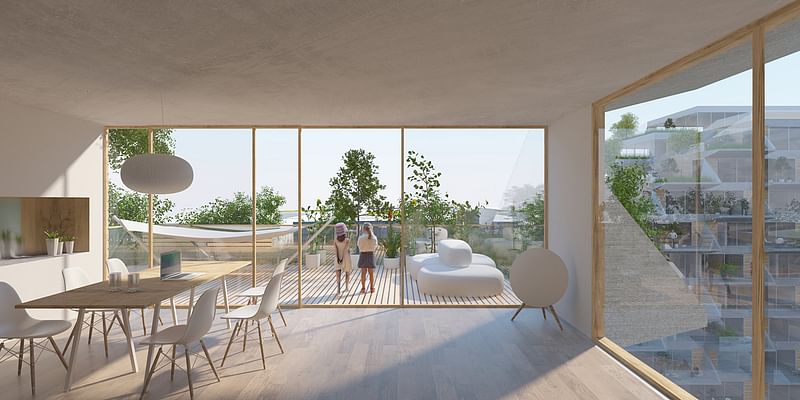
“Toward the water the block is lifted up, forming a large opening that brings water from the IJ Lake into the courtyard and brings daylight and views to the complex’s inner apartments,” BIG describes. “Toward the neighboring urban district the block steps down like a cascade of landscaped terraces, creating a natural transition from cityscape to smaller-scale, natural surroundings.”

“A promenade with public programs winds around the building and continues into the water, forming an archipelago of islands with houseboats, a sailing school, and floating gardens. A public passage climbs the cascading terraces of the building, serving as a small rooftop street that eventually loops onto the very top of the building to create a viewing platform over the IJ Lake.”
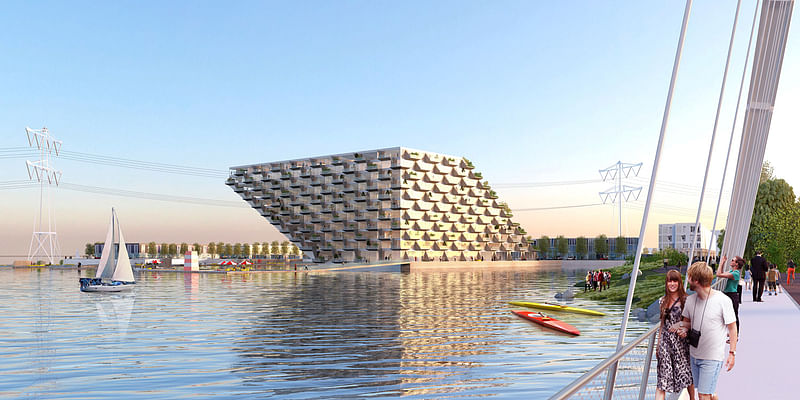
Sluishuis was designed with a dynamic silhouette that changes as one moves around the building. “At one vantage point it appears as the bow of a ship that reflects the water below; at another a vertical green community that invites visitors to engage directly with it; and finally as a true urban block with street-access” for residents and the rest of Amsterdam to enjoy.
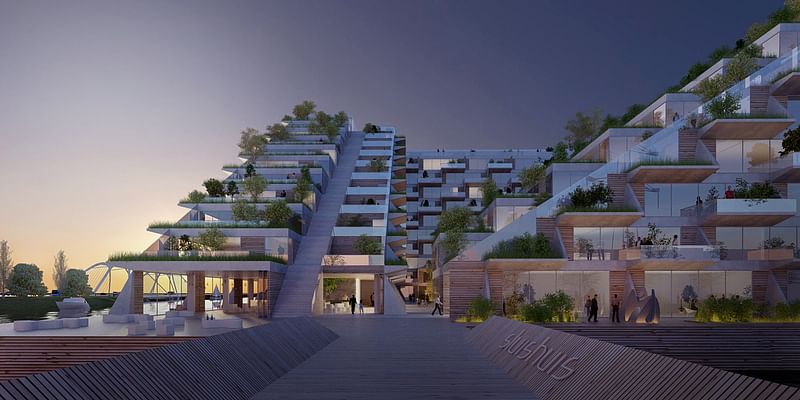
As is the norm with BIG's designs, Sluishuis will incorporate sustainable-design practices. According to BIG, the building will “increase social sustainability in the new neighborhood by reducing environmental impact during the construction phase, limiting total CO2 emissions, and by using renewable resources throughout the building.”
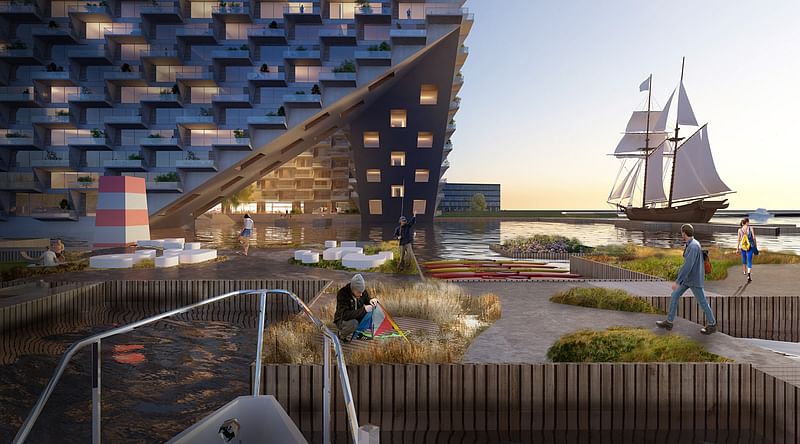
“The world-famous urban environment of Amsterdam was created by the fusion of water and city. The new Sluishuis is born of the same DNA, merging water and perimeter block and expanding the possibilities for urban lifeforms around the IJ,” stated BIG Partner Andreas Klok Pedersen.
Project credits:
Collaboration: BARCODE Architects, BOSCH SLABBERS, ABT, VAN ROSSUM, BURO BOUWFYSICA, KLIMAATGARANT, BIG Ideas
BIG Team
Partners in Charge: Bjarke Ingels, Andreas Klok Pedersen
Design Lead: Dimitrie Grigorescu
Project Manager: Birgitte Villadsen
Team: Justyna Mydlak, Nina Vuga, Santtu Johannes Hyvärinen, Jonas Aarsø Larsen, Kirsty Badenoch, Vinish Sethi, Yannick Macken, Ulla Hornsyld, Brage Mæhle Hult, Sebastian Liszka, Sabine Kokina
BARCODE Team
Dirk Peters, Caro van de Venne, Robbert Peters, Jakub Pakos, Cristobal Middleton, Mojca Bek, Emiliya Stancheva
More project images in the gallery below.
All images courtesy of BIG.

RELATED NEWS BIG's 2016 Serpentine Pavilion and the new Summer Houses make their public debut

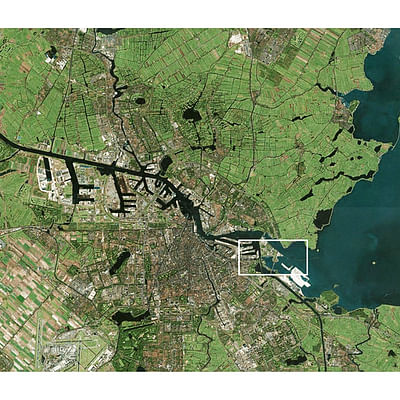
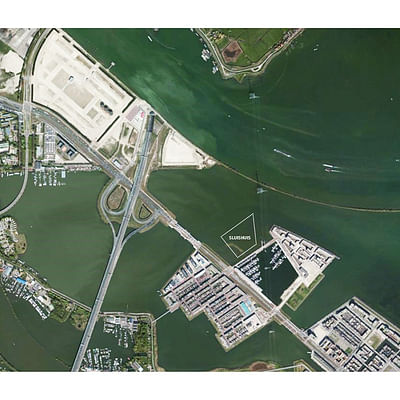
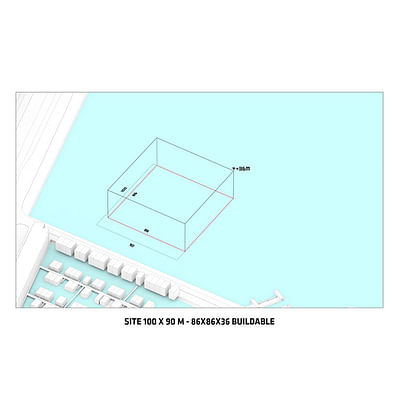
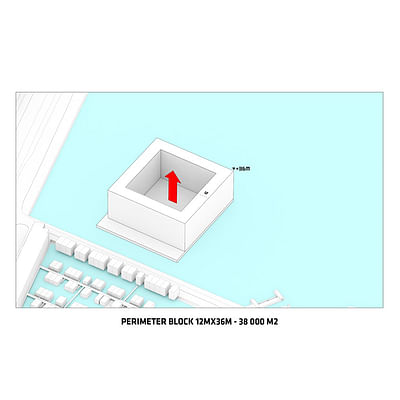
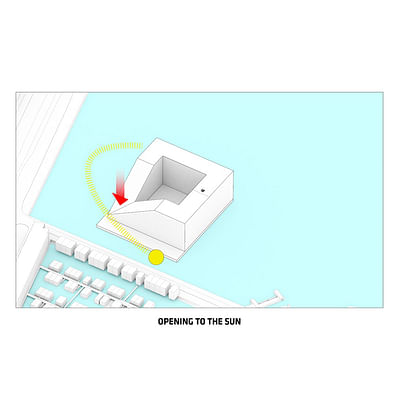
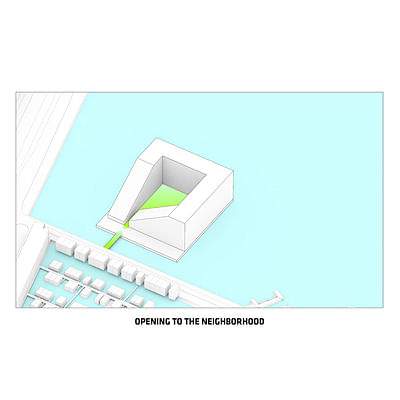

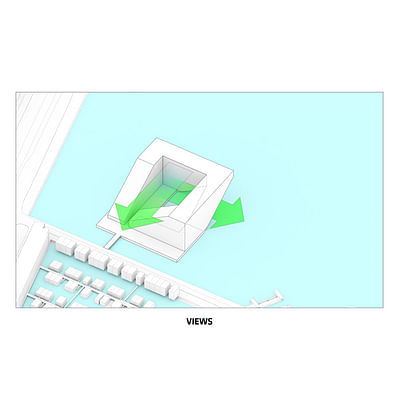

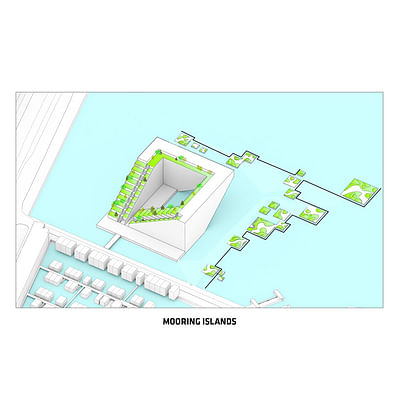
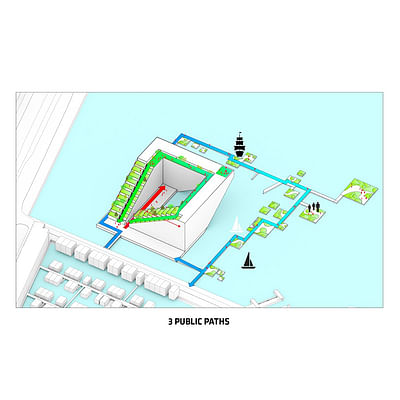

Share
0 Comments
Comment as :